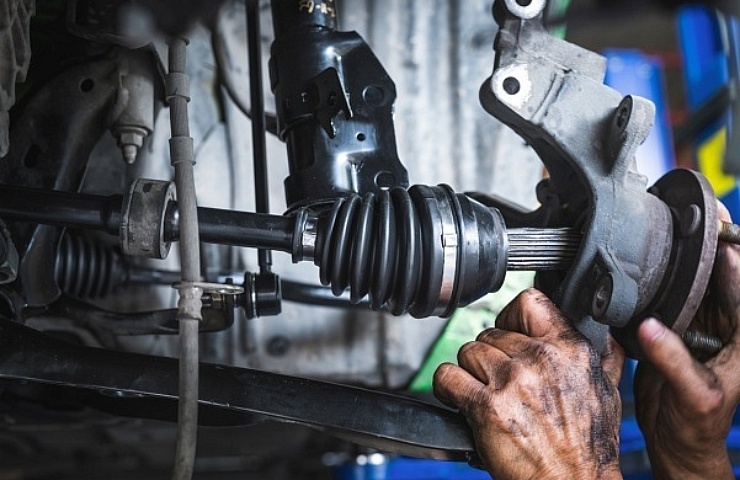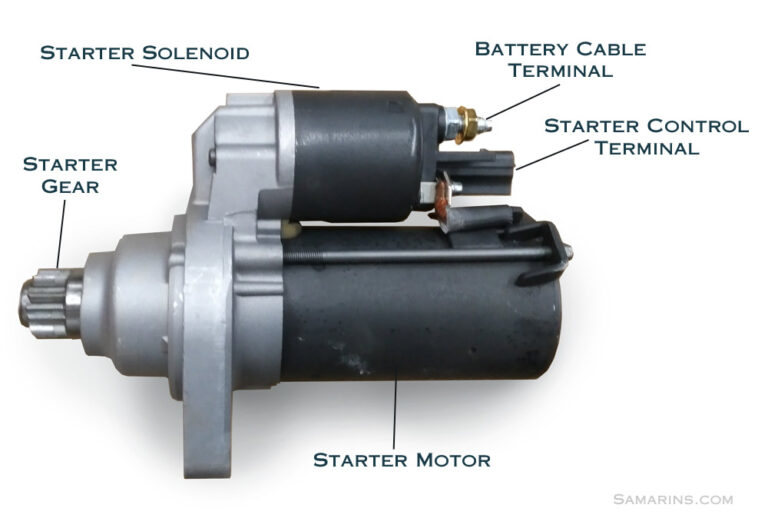How to Replace a Car’s CV Joint: Step-by-Step Guide
Replacing a car’s CV joint may seem hard. But, with the right steps, it’s easy. This guide will show you how to replace a CV joint.
What is a CV Joint?
A CV joint, or Constant Velocity joint, is a car part. It lets the drive shaft transmit power. This power goes to the wheels. CV joints are crucial for smooth driving.

Credit: m.youtube.com
Why Replace a CV Joint?
CV joints wear out over time. They may make clicking noises. You might feel vibrations. If ignored, they can break. This will leave your car undrivable.
Tools You Will Need
Before you start, gather all your tools. Here is a list:
- Jack and Jack Stands
- Lug Wrench
- Socket Set
- Hammer
- Flathead Screwdriver
- Pliers
- CV Joint Kit
- Grease
- Torque Wrench
Steps to Replace a Car’s CV Joint
Follow these steps to replace your car’s CV joint:
Step 1: Prepare Your Car
First, park your car on a flat surface. Engage the parking brake. Place chocks behind the wheels.
Step 2: Lift The Car
Use a jack to lift the car. Place it under the car’s jack points. Raise the car until the wheel is off the ground. Secure the car with jack stands.
Step 3: Remove The Wheel
Use a lug wrench to loosen the lug nuts. Remove the wheel and set it aside.
Step 4: Remove The Cv Joint
Locate the CV joint. It is near the wheel hub. Use a socket set to remove the bolts. You may need a hammer to tap it out.
Step 5: Install The New Cv Joint
Take the new CV joint from the kit. Apply grease to it. Slide it into place. Secure it with bolts. Tighten them with a torque wrench.
Step 6: Reattach The Wheel
Put the wheel back on. Tighten the lug nuts. Lower the car using the jack. Remove the jack stands.
Step 7: Test Drive
Take your car for a test drive. Listen for any unusual noises. Ensure the car drives smoothly.
Tips for Replacing a CV Joint
- Always wear safety gloves and glasses.
- Work in a well-lit area.
- Keep your tools organized.
- Follow the car’s manual for specific instructions.
Common Mistakes to Avoid
Here are some common mistakes:
- Not tightening the bolts properly.
- Forgetting to apply grease.
- Using the wrong tools.
- Not securing the car properly.
When to Seek Professional Help
If you feel unsure, seek professional help. A mechanic can replace the CV joint. It ensures the job is done right.

Credit: www.ebay.com
Frequently Asked Questions
What Is A Cv Joint In A Car?
A CV joint allows flexible movement of the drive shaft, ensuring smooth wheel rotation and power transfer.
How Do I Know If My Cv Joint Is Bad?
Listen for clicking noises when turning, excessive vibration, or grease leaks around the CV boot.
Can I Drive With A Damaged Cv Joint?
Driving with a damaged CV joint is unsafe. It can lead to further damage and potential loss of vehicle control.
What Tools Are Needed To Replace A Cv Joint?
You’ll need a jack, socket set, torque wrench, pliers, and a CV joint replacement kit.
How Long Does It Take To Replace A Cv Joint?
Replacing a CV joint typically takes about 2 to 4 hours, depending on experience and tools.
How Much Does It Cost To Replace A Cv Joint?
The cost ranges from $150 to $800, including parts and labor, depending on the car model.
Is It Difficult To Replace A Cv Joint?
Replacing a CV joint can be challenging for beginners. Basic mechanical skills and proper tools are necessary.
Conclusion
Replacing a car’s CV joint is not hard. With this guide, you can do it yourself. Follow the steps carefully. Use the right tools. Always prioritize safety. Your car will drive smoothly again.
Frequently Asked Questions (FAQs)
| Question | Answer |
|---|---|
| How long does it take to replace a CV joint? | It usually takes 1-2 hours. |
| Can I drive with a bad CV joint? | No, it’s unsafe. Replace it as soon as possible. |
| How often should I replace the CV joint? | Check it every 50,000 miles. Replace if needed. |
| What are the symptoms of a bad CV joint? | Clicking noises, vibrations, and poor handling. |
With the right tools and steps, you can replace a CV joint. Your car will run smoothly and safely. Happy driving!



